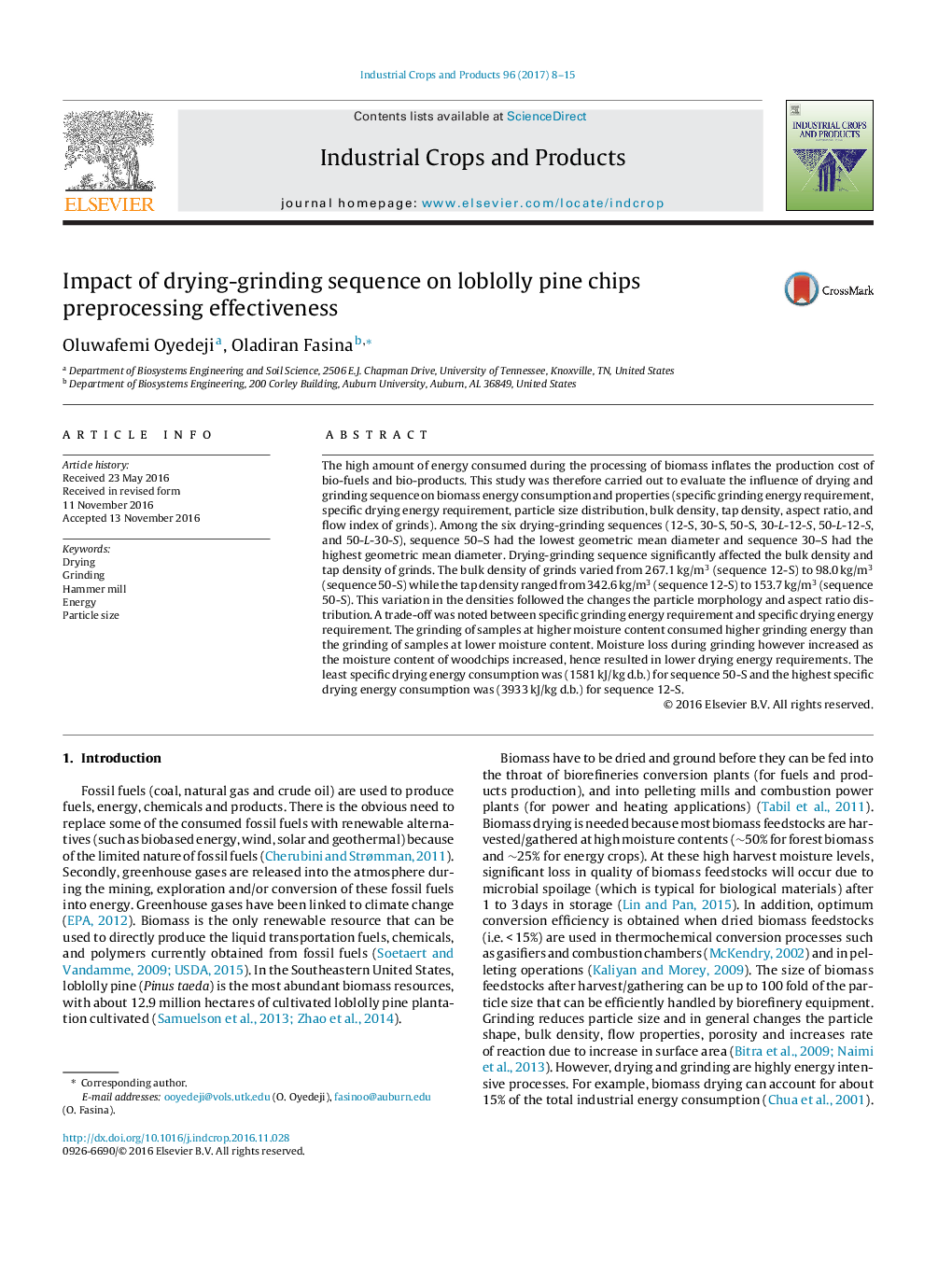| Article ID | Journal | Published Year | Pages | File Type |
|---|---|---|---|---|
| 5761985 | Industrial Crops and Products | 2017 | 8 Pages |
Abstract
The high amount of energy consumed during the processing of biomass inflates the production cost of bio-fuels and bio-products. This study was therefore carried out to evaluate the influence of drying and grinding sequence on biomass energy consumption and properties (specific grinding energy requirement, specific drying energy requirement, particle size distribution, bulk density, tap density, aspect ratio, and flow index of grinds). Among the six drying-grinding sequences (12-S, 30-S, 50-S, 30-L-12-S, 50-L-12-S, and 50-L-30-S), sequence 50-S had the lowest geometric mean diameter and sequence 30-S had the highest geometric mean diameter. Drying-grinding sequence significantly affected the bulk density and tap density of grinds. The bulk density of grinds varied from 267.1Â kg/m3 (sequence 12-S) to 98.0Â kg/m3 (sequence 50-S) while the tap density ranged from 342.6Â kg/m3 (sequence 12-S) to 153.7Â kg/m3 (sequence 50-S). This variation in the densities followed the changes the particle morphology and aspect ratio distribution. A trade-off was noted between specific grinding energy requirement and specific drying energy requirement. The grinding of samples at higher moisture content consumed higher grinding energy than the grinding of samples at lower moisture content. Moisture loss during grinding however increased as the moisture content of woodchips increased, hence resulted in lower drying energy requirements. The least specific drying energy consumption was (1581Â kJ/kg d.b.) for sequence 50-S and the highest specific drying energy consumption was (3933Â kJ/kg d.b.) for sequence 12-S.
Related Topics
Life Sciences
Agricultural and Biological Sciences
Agronomy and Crop Science
Authors
Oluwafemi Oyedeji, Oladiran Fasina,
